Farming Manila Clams
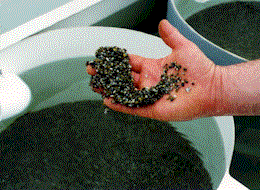 |
Farming clams start out at the hatchery where clam larvae is set on fine screens; then the young seed is raised in up-wells, containers which allow plankton- rich water to be pushed up through the juvenile clams, thereby allowing them to feed continuously and grow rapidly. |
Once the clam seed grows to sufficient size, it is then put into mesh bottomed trays which are then taken out to the bay to the nursery rafts. |
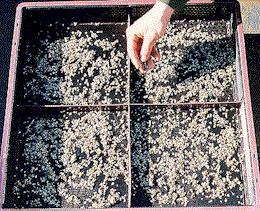 |
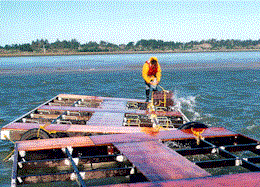 |
Once out to the nursery rafts, stacks of the trays of clams are suspended from the rafts allowing them to grow further, without having to raise the food in the hatchery to feed them. |
Once the clams get up to fingernail size, they are shipped to the growing area, in this case, Willapa Bay, Washington. Here they are planted by distributing them over net panels, the clams then work their way through the mesh of the net into the sand where they are then protected from predators as they grow. |
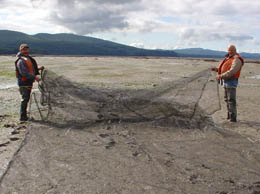 |
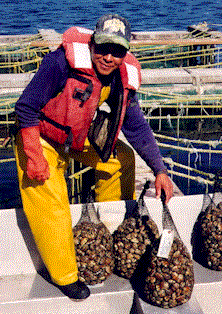 |
Once they have reached market size, they are dug and bagged, then brought to Penn Cove where they are suspended from wet storage rafts for purging until they are sold. Shown on the left are 25 pound bags of Hilton-Petite Manila Clams farmed at Willapa Bay, Washington, grown by our joint venture partner, Coast Seafoods Company. |
